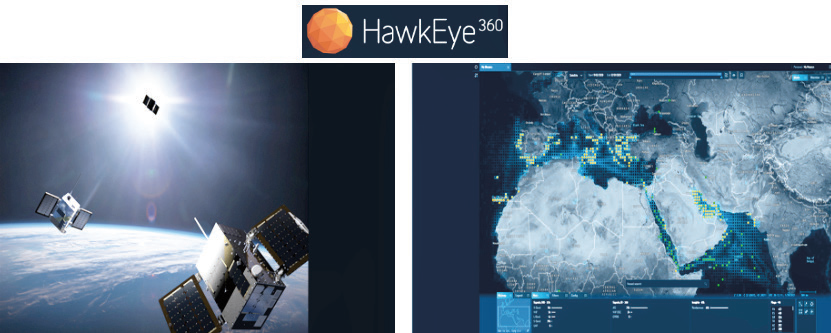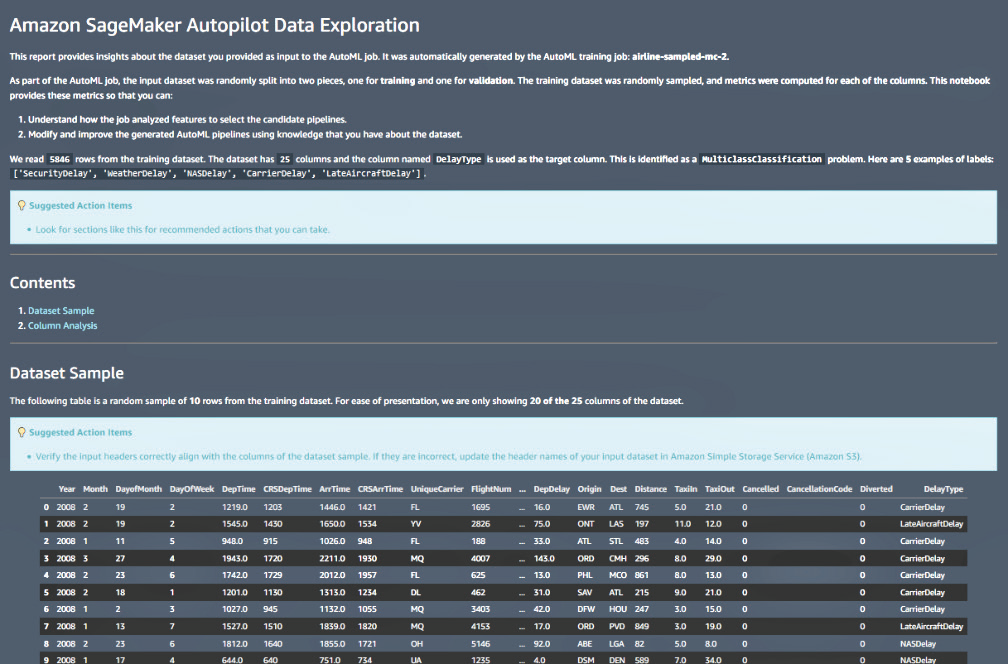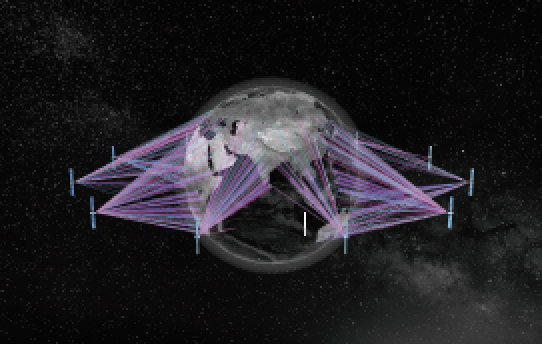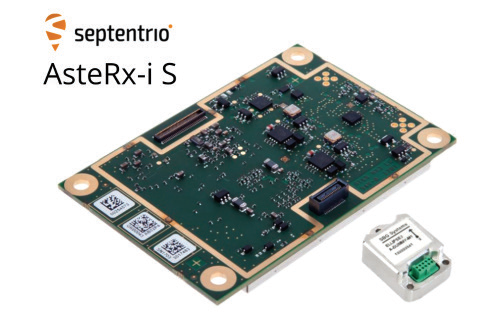HawkEye 360 Leverages Amazon Web Services ML To Optimize Capabilities

HawkEye 360 used Amazon SageMaker Autopilot — a fully managed service that helps make it easy to build, train and deploy ML models quickly — to develop the purpose-built, proprietary algorithms undergirding the new capabilities. These algorithms can help generate deeper insights into RF data in half the time than was previously possible.

The new algorithms evaluate vessels’ historical data and known interactions, along with contextual vessel characteristics to generate insights into the complex connections involved in illicit maritime vessel activity, such as illegal fishing, human trafficking, ship-to-ship transfer of illegal goods, smuggling and more. This provides analysts with a holistic view of maritime activity and the ability to detect, predict and zoom in on high- risk activity.

This RF signals analysis and machine learning ability can help make the oceans a safe place by supporting a variety of applications, including commercial maritime activity, national security operations, maritime domain awareness, environmental protection and more.
“RF signals can provide valuable insight into commercial vessel activity across the globe, even when bad actors seek to hide their location,” said Tim Pavlick, Vice President of Product at HawkEye 360. “With these machine learning-backed capabilities, we will empower customers to cut through an ocean full of noise to obtain more timely and critical insights from maritime RF data to improve mission outcomes and prevent illegal and illicit activities.”
Sri Elaprolu, Senior Manager of Amazon Machine Learning Solutions Lab, said, “By combining HawkEye’s data and deep domain expertise with Amazon SageMaker Autopilot, HawkEye 360 is able to cut in half the time for machine learning model development and deployment. That frees up time for their data scientists to focus on creating new and innovative solutions to the world’s problems.”
Findus Venture and Spire Global To Collaborate On The Launch of The ADLER-2 Smallsat to Tackle Space Debris
Findus Venture GMBH (“Findus Venture”) and Spire Global, Inc. (“Spire” or the “Company”) will collaborate on their launch of the ADLER-2 satellite in Q4 2022 in a bid to tackle the growing problem of space debris.

This new satellite aims to further enhance orbital debris monitoring in LEO and expand novel atmospheric sensing capabilities to study clouds and aerosols in the atmosphere. ADLER-2 will be a multi-payload satellite that uses Spire’s LEMUR 6U smallsat platform and will carry three customer payloads:
• An enhanced version of an orbital debris racking radar developed by Spire on behalf of Findus Venture
• An Austrian Particle Impact Detector piezo-sensor developed by the Austrian Space Forum (OeWF), designed to detect debris particle impacts developed by the Austrian Space Forum designed to detect debris particle impacts
• The GRASP-Airphoton Multi-Angle Polarimeter (GAPMAP), a wide field-of-view imaging instrument optimized for cubesat technology and designed for accurate and comprehensive measurements of the microphysical properties of aerosol particles and clouds in the atmosphere.
These new observations will perform air quality measurements around the globe and will support estimates of climate change patterns on Earth.
This is the second satellite collaboration between Spire and Findus Venture, following the ADLER-1 mission, which is set to launch into space in December 2021. ADLER-2 is expected to help increase the debris detection rate thanks to use of a debris detection radar with a larger antenna and increased detection range, and also to double the number of observations logged.

Artistic rendition of Spire Global’s Lemur-2 smallsat on-orbit.
Image is courtesy of the company.
Spire will build, launch and operate the satellite, leveraging its radio frequency CubeSat design and manufacturing capability with its satellite tasking, collection, processing, data dissemination, and command and control infrastructure. Spire will also provide the orbital debris radar to Findus, integrate the other sensors, and enable access to all of them via an easy-to- use application programming interface (API).
This agreement between Findus Venture and Spire is based on a flexible subscription model with a monthly payment plan. This model benefits Spire’s customers by reducing high upfront expenditures, enabling predictable service charges distribution, and allowing an easier extension of the service provision beyond the lifecycle of the hardware.
Christian Federspiel, CEO, Findus Venture, said, “It is essential to understand space debris in order to build and operate satellite-based commercial services with service- level agreements. The intention of the ADLER-x series of satellites is to contribute to a deeper knowledge of space debris.”
Theresa Condor, Executive Vice President and General Manager of Spire Space Services, said, “The rapid and substantial growth of space-based activity in recent decades presents us with many opportunities but also significant challenges. Space debris, and the increased risk of collisions between objects, is something we need to manage carefully and as a first step we need to improve our understanding of what is happening and when. The ADLER-2 will join the ADLER-1 in helping us better detect debris and understand what we need to do to solve this challenge. Our business subscription model, evidenced by this second successful partnership with Findus Venture, also means we can work faster and more efficiently, at a lower upfront cost for our clients.”
MoU Signed Between SES + RCSC For O3b mPOWER Services In Kazakhstan
The Republican Center for Space Communications (RCSC), a subsidiary of the Ministry of Digital Development, Innovation and Aerospace Industry, and SES have signed a Memorandum of Understanding (MoU) to explore service agreements for satellite-enabled, high- speed connectivity services using SES’s O3b mPOWER communications system in Kazakhstan to accelerate the Digital Kazakhstan project.

Artistic rendition of SES’s O3b mPOWER satellite
constellation on-orbit. Image is courtesy of SES.
Under this memorandum of understanding, RCSC will explore using SES’s next-generation, high-performance, low-latency constellation scheduled to launch in Q3 2021.
Located at 8,000km away from the Earth’s surface in MEO, the fully-funded O3b mPOWER system will provide global coverage with as few as six satellites and will ramp capacity with its current plan of 11 satellites. The system is capable of delivering dedicated services at multiple gigabits per second with unprecedented flexibility and resiliency, ensuring constant, efficient usage of bandwidth.
In addition, SES has also conducted a demo on the current O3b constellation in Saryagash in central Kazakhstan where it provided 730 megabits per second to a local mobile tower, enabling the delivery of carrier-grade low-latency Wi-Fi services in the region.

In addition, RCSC and SES will also look into using O3b mPOWER services for other Central Asian countries with ubiquitous broadband access to the Internet.
“Today, the market for satellite communications services is highly competitive as the needs of operators and end users grow on a daily basis. An increase in channel throughput and high-quality requirements calls for an introduction of new services, and we cannot disregard the opportunities that new satellite technologies will deliver. Therefore, we are looking into an international cooperation using next-generation global high-speed, low-latency non-geostationary satellites (NGSO) systems,” said Chairman of the Board of JSC “RCSC” Malik Zhuiriktayev.
“In the digital era, high-speed connectivity and reliable network access is of utmost importance to empower business and communities – especially remote ones. At SES, we take pride in leveraging our unparalleled reach and proven technology to contribute to the digital transformation of Kazakhstan through cloud-enabled satellite communications. We are pleased to support RCSC with our services and proven NGSO experience as they continue to innovate and expand their data services in Kazakhstan, and we look forward to more collaborations with other companies in the country,” said JP Hemingway, CEO of SES Networks.

The AsteRx-i3 product line includes a total of 5 new GNSS/INS receivers. The Pro receivers offer high accuracy positioning with 3D orientation and dead-reckoning functionality for fastest and easiest plug-and-play integrations.
Meanwhile, the Pro+ are the most versatile receivers providing integrated positioning and orientation along with raw measurements, in single or dual antenna configurations, ideal for applications with sensor fusion. One of the receivers offers an off-board IMU sensor, which can be mounted exactly at the alignment point-of-interest.
Albedo’s Seed Round Delivers $$$Millions
Albedo has plans to design and operate a constellation of satellites that capture visible and thermal imagery at the highest resolution available and the company has announced a successful seed round that resulted in

$10 million in funding to help meet their business and technology goals.
The firm’s mission is to be the catalyst in unlocking satellite imagery’s latent potential, with the goal of expanding current applications and propelling the discovery of new use cases.
They stated that, whether their imagery is being used to reduce wildfire risk, assess the environmental impact of global forestry, contribute to timely 3D reconstructions of urban areas, or monitor carbon emissions from industrial power plants, their plan is to get better high-resolution data into the hands of decision makers… fast.
As a key step towards this goal, Albedo’s seed round was led by Initialized Capital, with participation from Liquid 2 Ventures, Soma Capital, Jetstream, Rebel Fund, and others.
In addition, Albedo’s angel investors have infused domain expertise and operating experience into the company and include… Keith Masback (former USGIF CEO), Tom Sheridan (Lt. General, USAF, Ret.), Kevin Mahaffey (Lookout co- founder), Daniel Kan (Cruise co-founder/CPO), Immad Akhund (Mercury co-founder/CEO), James Park (Fitbit co-founder / former CEO), and Harsh Patel (former Galvanize CEO).
This funding will be key in building out the company’s team of mission-driven experts, maturing their ground software and satellite design and partnering with hardware suppliers to start the development of Albedo’s first system.

Gilat’s subsidiary, Wavestream, was selected as the vendor of choice to supply Gateway Solid State Power Amplifiers (SSPAs) to a leading satellite operator to support LEO constellation gateways. The orders were received as part of the previously announced contract.
Wavestream’s Gateway-Class PowerStream 160Ka SSPAs, designed specifically for networks using wide bandwidth uplinks and high order modulation schemes, were selected due to their best-in-class technical performance and their unmatched reliability in harsh environments, best addressing the stringent requirements of Non-Geostationary Satellite Orbit (NGSO) constellations.
“We are fully engaged and committed to deliver the essential SSPAs for the LEO constellation Gateways,” said Bob Huffman, Wavestream’s General Manager. “Wavestream’s proven technological advantage, as well as our unmatched production capacity, make us a perfect supplier for the high volume of Ka-band Gateway-class SSPAs required for this constellation.”




